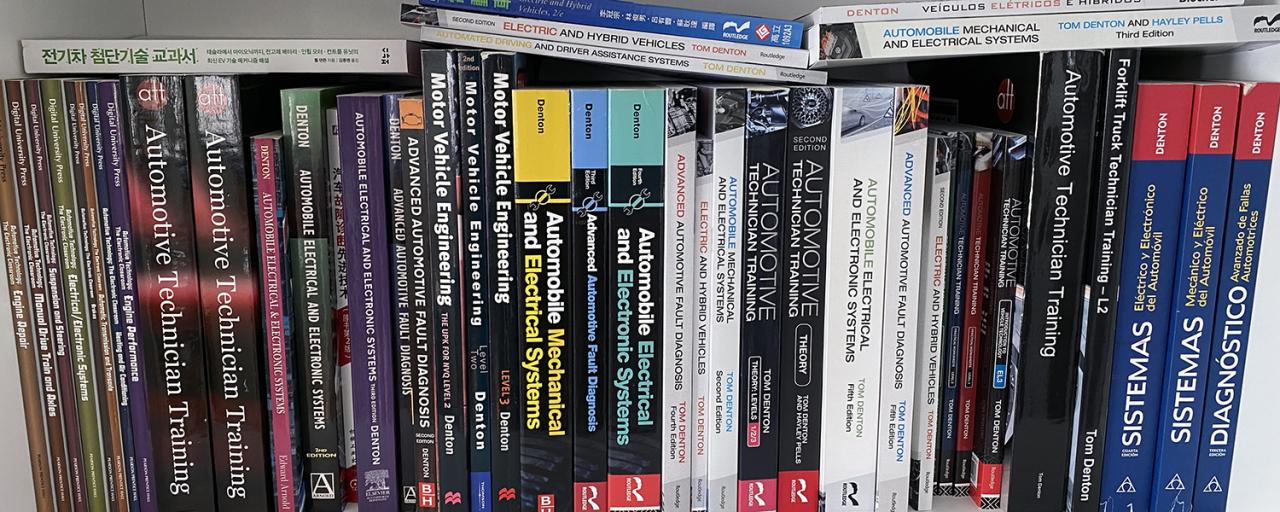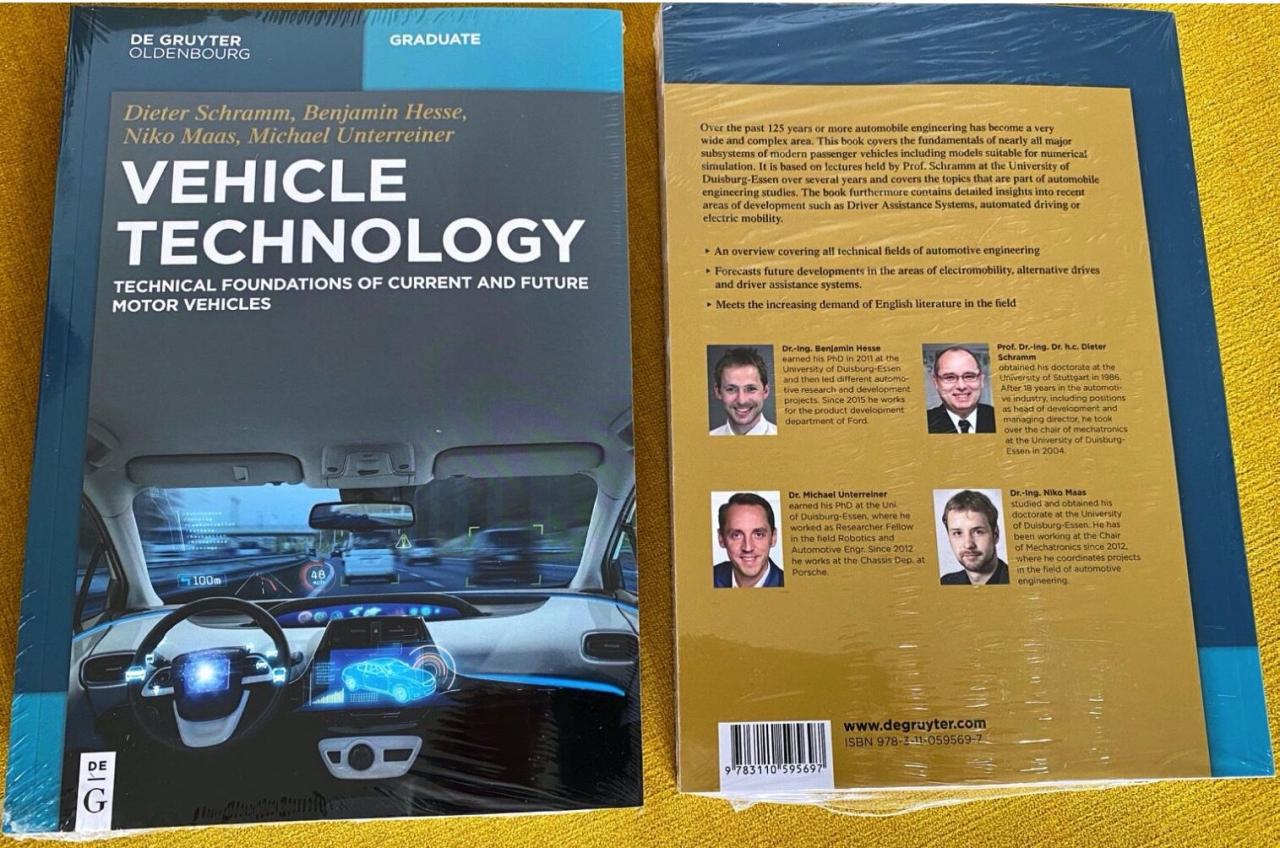Automobile Technology Book: A Journey Through Automotive Innovation
Automobile Technology Book takes you on a captivating journey through the evolution of the automobile, from its humble beginnings to the cutting-edge advancements shaping the future of transportation. This book […]

Automobile Technology Book takes you on a captivating journey through the evolution of the automobile, from its humble beginnings to the cutting-edge advancements shaping the future of transportation. This book delves into the fascinating world of engine technology, transmission systems, chassis design, safety features, and the ever-evolving realm of automotive electronics and connectivity.
Prepare to be amazed by the ingenuity and innovation that have propelled the automobile industry forward, exploring the contributions of key figures like Henry Ford and Karl Benz, and gaining insights into the intricate workings of modern vehicles. This comprehensive guide will equip you with a deep understanding of the technologies that power our cars and the trends that will continue to revolutionize the way we travel.
Chassis and Suspension Systems

The chassis is the foundation of an automobile, providing structural support and housing essential components like the engine, transmission, and suspension. The suspension system, in turn, connects the chassis to the wheels, absorbing road shocks and ensuring a smooth ride. This chapter explores the intricate components of a typical automobile chassis and the various types of suspension systems employed to enhance ride comfort, handling, and stability.
Frame and Suspension Systems
The frame, a rigid structure, forms the backbone of the chassis, supporting the weight of the vehicle and providing mounting points for various components. There are two primary types of frames:
- Body-on-Frame Construction: This traditional design features a separate frame onto which the body is mounted. The frame acts as a strong and independent structure, while the body is attached to it using mounting points. This design offers high strength and durability, making it suitable for heavy-duty vehicles and trucks.
- Unibody Construction: Unibody vehicles combine the frame and body into a single, integrated structure. The body panels themselves contribute to the structural integrity of the vehicle. This design is lighter and offers better fuel efficiency compared to body-on-frame construction. However, it may be less durable for heavy-duty applications.
The suspension system, crucial for vehicle stability and ride comfort, consists of various components:
- Springs: Springs are elastic components that absorb shocks and vibrations from the road. They come in various types, including coil springs, leaf springs, and torsion bars.
- Shock Absorbers: Shock absorbers, also known as dampers, control the spring’s movement, preventing excessive bouncing and oscillations. They work by converting the kinetic energy of the suspension into heat, which is dissipated into the surrounding environment.
- Control Arms: Control arms connect the wheels to the chassis, providing lateral stability and guiding the wheels during suspension movement.
- Bushings: Bushings are rubber or polyurethane components that isolate the suspension components from the chassis, reducing noise and vibration transmission.
- Stabilizer Bar: A stabilizer bar, also known as an anti-roll bar, connects the suspension components on opposite sides of the vehicle. It helps to reduce body roll during cornering by resisting the inward tilt of the vehicle.
Types of Suspension Systems
Suspension systems are categorized based on their design and the way they manage wheel movement. Two commonly employed types include:
- MacPherson Strut: This design uses a single strut assembly that combines a coil spring and a shock absorber within a single unit. The strut is attached to the wheel hub and the chassis, providing both spring and damping functions. This system is compact and cost-effective, making it popular for front-wheel-drive vehicles.
- Double Wishbone: The double wishbone suspension utilizes two wishbone-shaped arms, one upper and one lower, connected to the wheel hub and the chassis. This design offers excellent handling and stability, as it provides independent control over wheel movement in both vertical and lateral directions.
Role of Suspension in Vehicle Performance, Automobile technology book
The suspension system plays a vital role in determining a vehicle’s ride comfort, handling, and stability.
- Ride Comfort: Suspension systems absorb road shocks and vibrations, providing a smoother and more comfortable ride for passengers.
- Handling: A well-designed suspension system allows for precise steering control and responsive handling, enabling the vehicle to maneuver smoothly and confidently.
- Stability: Suspension systems contribute to vehicle stability by controlling body roll and pitch, ensuring the vehicle remains balanced and predictable, especially during cornering and braking.
Automotive Electronics and Connectivity: Automobile Technology Book

Modern vehicles have become increasingly reliant on electronics, transforming them into complex technological marvels. This chapter delves into the intricate world of automotive electronics, exploring their roles in enhancing performance, safety, and convenience. We’ll also examine the growing connectivity of automobiles, exploring the implications of this trend for drivers, manufacturers, and the future of transportation.
Engine Control Units (ECUs)
The engine control unit (ECU) is the brain of a modern vehicle, managing various aspects of engine operation for optimal performance and fuel efficiency. ECUs utilize sensors to monitor engine parameters such as air intake, fuel pressure, and engine speed. This data is processed by the ECU, which then adjusts engine parameters like fuel injection timing and ignition timing to achieve desired performance levels.
Infotainment Systems
Infotainment systems have revolutionized the in-car experience, offering a wide range of entertainment and information features. These systems typically integrate a touchscreen display, radio, CD player, navigation system, and Bluetooth connectivity. Some advanced infotainment systems also incorporate voice control, smartphone integration, and internet access.
Driver Assistance Features
Modern vehicles are equipped with an array of driver assistance features designed to enhance safety and convenience. These features utilize sensors, cameras, and software to monitor the vehicle’s surroundings and assist the driver in various situations. Common driver assistance features include:
- Adaptive cruise control (ACC): Maintains a safe distance from the vehicle ahead, automatically adjusting speed to maintain the desired gap.
- Lane departure warning (LDW): Alerts the driver if the vehicle drifts out of its lane without signaling.
- Blind spot monitoring (BSM): Detects vehicles in the driver’s blind spots and warns them of potential hazards.
- Automatic emergency braking (AEB): Detects potential collisions and automatically applies the brakes to avoid or mitigate the impact.
Connectivity in Automobiles
The automotive industry is witnessing a surge in connectivity, with vehicles increasingly becoming connected to the internet and other devices. This trend is driven by advancements in wireless technologies like Bluetooth, Wi-Fi, and cellular networks.
Implications of Connected Vehicles
Connected vehicles offer numerous benefits, including enhanced safety, convenience, and improved driver experience. However, it’s crucial to address potential challenges related to data security and privacy.
Safety Benefits
Connected vehicles can contribute to improved road safety by providing real-time information about traffic conditions, road hazards, and potential accidents. This data can help drivers make informed decisions and avoid dangerous situations.
Convenience Features
Connected vehicles offer various convenience features, such as remote vehicle access, remote diagnostics, and over-the-air software updates. These features enhance the overall ownership experience and simplify vehicle maintenance.
Data Security Concerns
Connected vehicles collect vast amounts of data about drivers, their driving habits, and their vehicle’s performance. This data raises concerns about privacy and security, as it could be vulnerable to hacking or misuse.
Last Point

As we conclude our exploration of Automobile Technology Book, we are left with a profound appreciation for the remarkable advancements that have shaped the automobile industry. From the combustion engine to electric vehicles, each chapter has unveiled a fascinating story of human ingenuity and the relentless pursuit of innovation. The future of automobile technology holds immense promise, with autonomous driving, hydrogen fuel cells, and other groundbreaking concepts poised to transform our transportation landscape. This book serves as a testament to the transformative power of technology and its ability to shape our world in profound ways.
An automobile technology book can be a great resource for understanding the inner workings of your vehicle, but did you know that technology is advancing in other fields too? Check out new chiropractic technology for a glimpse into the future of spinal health.
Just like automotive technology, chiropractic advancements are constantly evolving, offering new ways to improve patient care and well-being.










